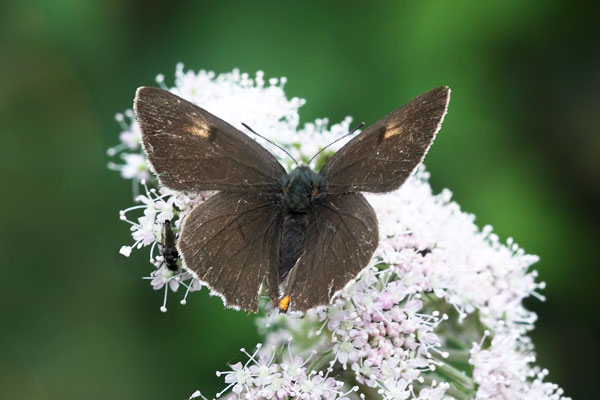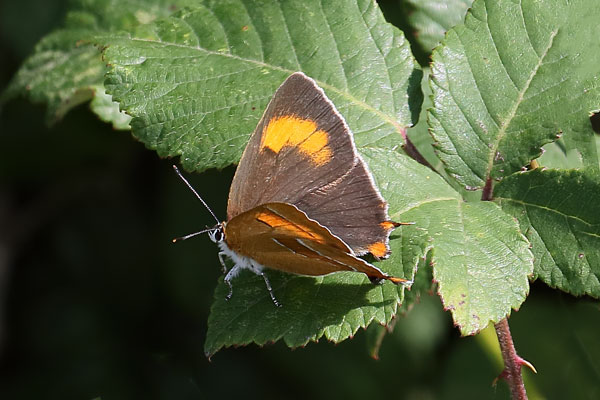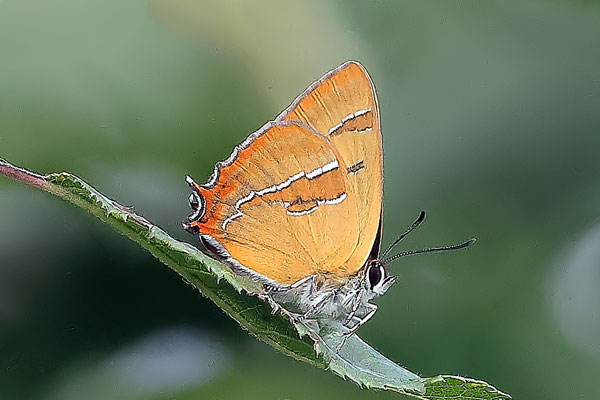Brown Hairstreak (Thecla betulae) | Species | ||||||||||||||||||||||||||||||||||||||||||||||||||||||||||||||||||||||||||||||||||||||||||||||||||||||||||||||||||||||||||||||||||||||||||||||||||||||||||||||||||||||||||||||||||||
 Male. Taken at Otmoor, Oxon on August 12th 2011. (© David Hastings) (1/125th sec at f11)  Male underside. Taken at Otmoor, Oxon on August 12th 2024. (© David Hastings) (1/1000th sec at f/11)  Female. Taken at Otmoor, Oxon., on August 23rd 2021. (© David Hastings) (1/400th sec at f11)  Female underside. Taken at Otmoor, Oxon on July 14th 2025. (© David Hastings) (1/1000th sec at f/11) DescriptionFamily: Theclinae Wing span: 37 - 44 mm This is the largest hairstreak found in the British Isles. Males and females are similar, but the female underside is a much richer orange-brown. Top surfaces are occasionally seen. The males are brown, while the females have a large orange patch on each forewing. This species is found in the southern half of England and Wales, and also in the Burren in Ireland. It is a local species that lives in self-contained colonies that breed in the same area year after year. It favours areas with extensive networks of hedges and woodland, often on heavy clay soils on low-lying land. The Brown Hairstreak is one of the latest species to emerge in Britain, with adults being on the wing from late July to early September. The ovum is the over-wintering stage. The primary larval foodplant is Blackthorn. Adults feed primarily on aphid honeydew. They will occasionally take nectar from bramble and umbellifers like Wild Angelica. Adults, particularly the males, spend much of their time high up in Ash and Oak trees. Females must descend in order to lay their eggs. Vulnerable Earliest UK sighting: 14th July ; Latest UK sighting: 16th September Sightings
| |||||||||||||||||||||||||||||||||||||||||||||||||||||||||||||||||||||||||||||||||||||||||||||||||||||||||||||||||||||||||||||||||||||||||||||||||||||||||||||||||||||||||||||||||||||

